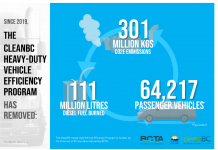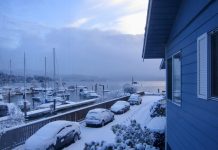Hauling temperature-controlled freight requires a special set of skills and attention to detail. For one thing, most temperature-controlled freight is for human consumption, so temperature integrity is an absolute must. Temperature-controlled trailers fall into two categories: reefers and heaters.
Reefers maintain a set temperature. If the unit is set at 29°F, then the unit will keep the interior temperature (known as the “box temp”) at 29°F, with a tolerance of +/- 5°F in cycle sentry (start/stop) mode, and +/- 3°F in continuous mode. Reefers run in cycle sentry mode more than 95% of the time to save fuel. However, some products, such as house plants, require continuous mode as they need air circulation to preserve the plants. Medications also require continuous mode, as do some food products.
Some reefer trailers are capable of maintaining 2, 3, or even 4 different temperatures. These can be very tricky, so be sure to load them correctly. As a rule, frozen goods go on the driver’s side of the trailer, fresh goods on the passenger side, protect from freezing behind the frozen/fresh, and non-temperature-controlled items at the very back. Insulated portable bulkheads are used to create the various compartments and keep everything in the proper temperature zone.
Protect from freezing (heater) trailers are somewhat different from reefers. Older ones use a propane-powered heater to keep the interior warm. Thankfully, most of these units have since been replaced with diesel-powered heaters, but you may come across an old propane-powered unit. If you do, you must be EXTREMELY careful when starting the propane heater. Failure to follow the safety instructions could cause the unit and the trailer to explode. Fortunately, almost all heaters are now diesel-powered, making them safer and more reliable, as well as more cost-effective to operate. They differ from reefers in that they only run if the box temperature falls below the set point. If you set it at 45°F, the heater will only start if the box temperature falls below 45°F; otherwise, it shuts off. The box temperature could rise to 80°F, and the heater will remain inactive.
When pulling a temperature-controlled load, every time you stop for any reason, check the set point and box temperature on the trailer. With a reefer, it is also a good habit to initiate a defrost cycle every time you check the unit. They have an automatic defrost cycle, but trusting it to work flawlessly is a risk. If you check the reefer and the temperature is way out of range, more than 10°F above the set point, but the unit isn’t displaying any error codes, chances are it is in defrost mode. If it’s out of range and showing error codes, copy the codes down and report them to your dispatcher and/or service department immediately.
Most reefers have a light on the front that is easily visible in your driver’s side mirror, so get into the habit of checking it regularly. A green light means all is well, an amber light means a small problem that needs attention but is not urgent, and a red light means a serious issue has occurred, and the unit has shut itself down. When safe, pull over, write down the codes, and then clear them. The unit will perform a self-check and attempt to start again. If it starts, carry on and report the codes to the service department when you return to the yard. If it doesn’t start and starts flashing error codes, you need to report these codes immediately. If you get the “engine stopped, reason unknown” code, check the trailer’s fuel tank. It may have run dry. It happens far more often than you may think, and it’s more embarrassing than dangerous. Even after you fill the tank, it will make the unit hard to start.
More information on temperature-controlled freight will be provided later.






















